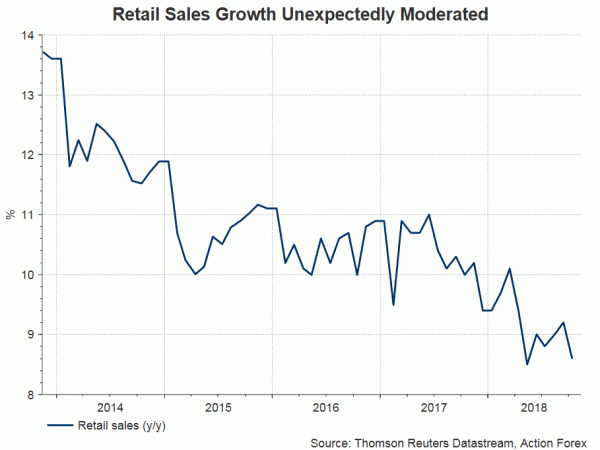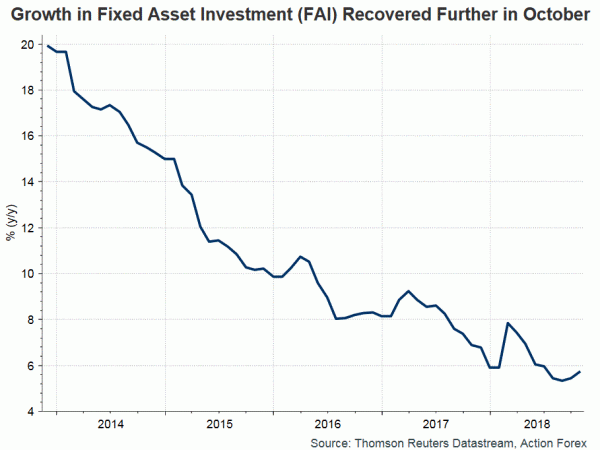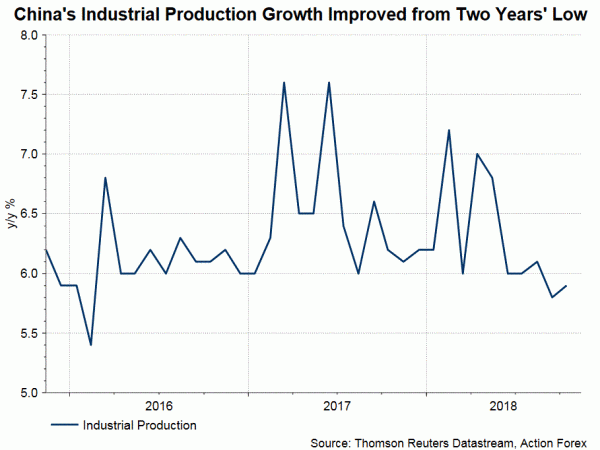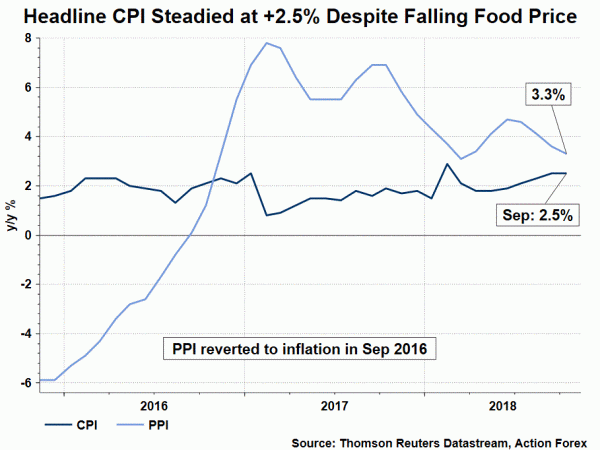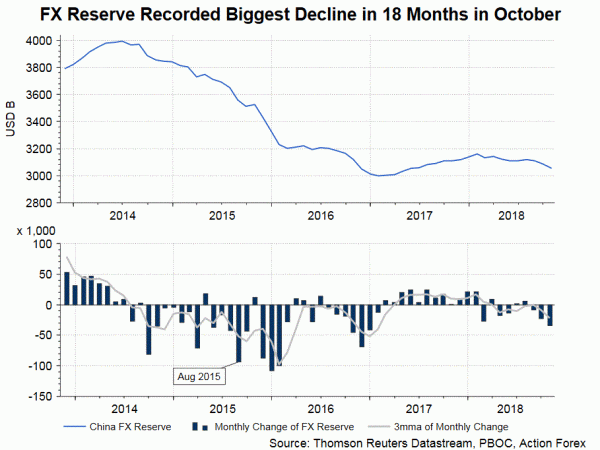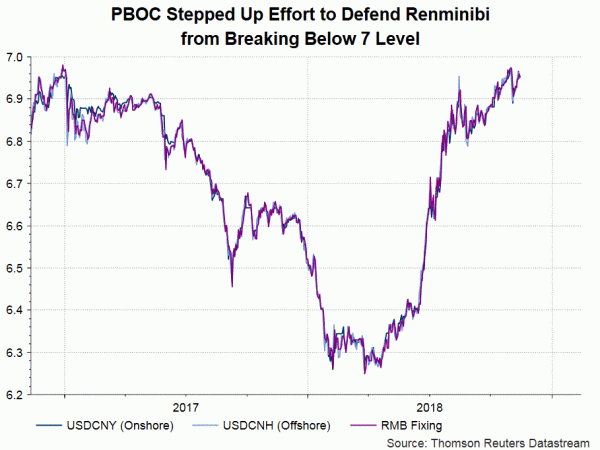The latest set of macroeconomic data in China was mixed. Retail sales grew +8.6% y/y in October, weaker than consensus of, and September’s +9.2%. Automobile sales, contributing 10% to retail sales, declined -11.7% in October, marking the first annual contraction in almost 3 decades. Alongside the personal tax reform, the government has proposed to reduce car purchase tax by half to 5%. This is expected to stimulate car sales by +2.5%, resulting in a +0.25% boost in retail sales.
Retail sales in November would probably improved, in both monthly and annual basis, as driven by the country’s “double-eleven” festival. It was reported that Alibaba’s total transaction jumped +26.9% y/y to RMB 213.5B on that day. Seasonal effect should be noted on interpretation China’s retail sales in November.
Growth in industrial production and urban fixed asset investment improved. For the former, growth picked up to +5.9% y/y, from +5.8% in September. For the latter, growth accelerated to +5.7% in the first 10 months of the year, compared with +5.4% in the first 9 months. The market had anticipated a growth of +5.5%. Looking into the details, private investment, taking up 60% of total investment in China, gained +8.8% in January-October, up from +8.7% in January- September. Government’s infrastructure spending jumped to +3.7% in January-October, from +3.3% in January- September.
Headline CPI steadied at +2.5% y/y in October. Deceleration in food price inflation (+3.3%, vs Sep’s +3.6%) was offset by a pickup in non-food inflation (+2.4% vs Sep” +2.2%. Core CPI (excluding food and energy prices) climbed +0.1 percentage point to +1.8% for the month. PPI moderated further to +3.3% y/y from 3.6% in September. This was despite higher oil prices. The downtrend in PPI suggests that headline CPI would probably be capped below February’s +2.9%.
FX reserve fell –US$ 33.93B to 3.053 trillion, the lowest since April 2017. The decline exceeded market expectations and marks the sharpest since December 2016, signaling PBOC’s intervention efforts to defend renminbi. US dollar strengthened against major currencies last month. Yet valuation effect was about US19B, or 56% of the decline in FX reserve.
This indicates that PBOC accelerated its effort to sell FX reserve in support of renminbi’s value. Extending the depreciation for the 7th month, renminbi dropped -1.5% against US dollar. Renminbi has so far managed to stay above psychological level of 7, evidencing the government’s intervention effort. We expect to see futher decline in FX reserve in November.
Implications on Monetary Policy
China’s economic policy has been torn between huge debt and slowing growth. The dilemma has been aggravated since Trump imposed the first trade tariff in July. The Chinese government has shifted its policy focus from deleveraging (credit tightening) to growth stimulation. We expect monetary and fiscal easing would be the key in China. With inflation eased, this should clear the hurdle for PBOC to loosen its monetary policy.




